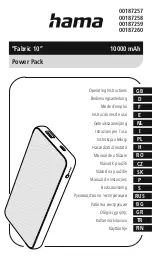
12
3-4
Setting Torque
Once the system is fully connected and the proper power supply is available, it is time to adjust the pump pressure
to the level needed on your job.
When tightening, use the manufacturer’s specifications to determine the torque value which you will ultimately
require.
Torque sequence may vary from plant to plant and even within individual plants, depending upon the gasket
material, etc. Always abide by local procedures.
The included torque chart is a guideline for comparison only and gives typical torque values specified for the most
commonly encountered fasteners.
Next, find the pressure-torque conversion table applicable to the tool which you intend to use.
An example of finding the desired torque required is as follows:
Assume you are going to use a TORC, LLC.
TTZ tool to torque a 1-1/4” bolt to 1,265 ft. lbs.
Start by going to the torque chart that was shipped with the tool. On the torque chart read left-to-right across the top
line to the column TTZ.
Start by referring to the pressure-torque conversion table for the tool you are using and read left-to-right across the
top line to the rightmost column.
Now using 1,280 ft. lbs., read back to the left on that same line and read the pump pressure, under the PSI column,
4,000PSI.
To be technically correct, you should diminish that 4,000PSI by 1.5% ( to 3,940), but 1,280 is well within the tool’s
+/-3% accuracy range, so proceed to set 4,000PSI on your pump’s regulator valve.













































